Brand New Ways to Reset/Erase Mac M1/M2 [Safe & Sound]
Why should I erase Mac and factory reset it? Users may need to erase their Mac when a computer virus attacks them, they need to sell or give away their Mac, update to macOS Ventura, and it is not performing well on their Mac, or just because the macOS base system is running slowly on Mac.
Mac users can erase Macs with the Erase All Content and Settings option and the Recovery Mode. Here is a chart that can help you skip to the two methods directly:
| Workable Solutions | Step-by-step Troubleshooting |
|---|---|
| 1. Erase Mac with Erase Assistant | Click the Apple icon and choose "System Settings". Click the "General" button...Full steps |
| 2. Erase Mac with Recovery Mode |
Shut down your Mac. Turn on the Mac and hold the Command + R keys or the power...Full steps |
Sign Out of Linked Account on Mac Before Erasing Mac
If you want to keep your personal information private, you should sign out of all the linked accounts on your Mac before you give away or sell your Mac.
Tip 1. Sign Out of Accounts on Mac
You should sign out of Apple TV, Apple Music, and other linked accounts on Mac to avoid using them by others.
Step 1. Run the target applications on Mac.
Step 2. Click "Account" in the upper left corner.
Step 3. Choose "Authorisations".
Step 4. Click "De-authorise This Computer", and then you should type in the password to confirm.
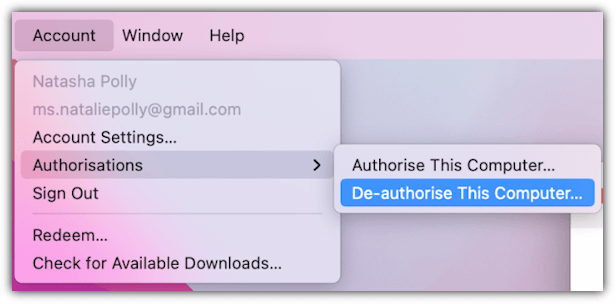
Tip 2. Log Out of iCloud on Mac
iCloud is an Apple service that can store pictures, documents, memos, and other personal information on the cloud. Logging out of iCloud on Mac can make your information kept on the cloud safely.
Step 1. Click the Apple icon to open the Apple menu.
Step 2. Choose "System Preferences" and click "Apple ID".
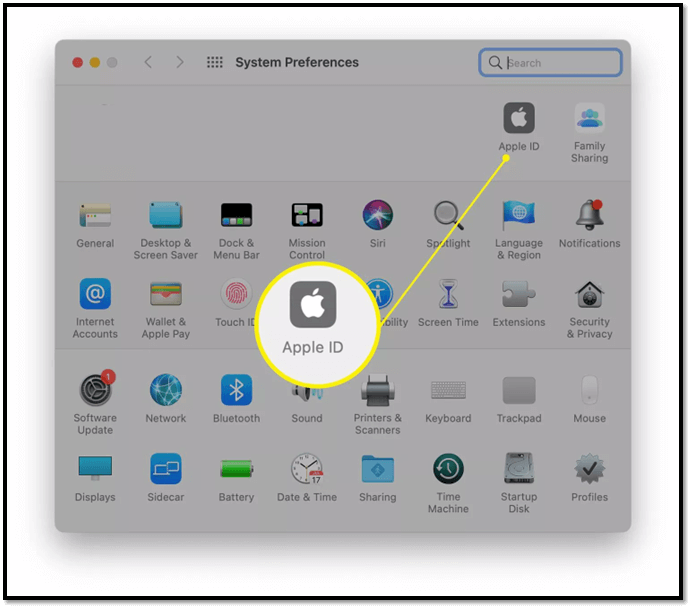
Step 3. Click the "Sign Out" button.
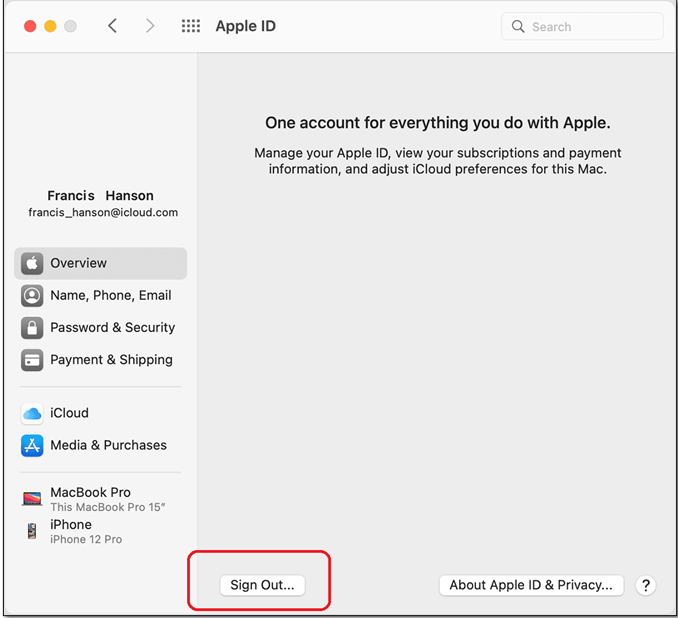
Tip 3. Unpair Bluetooth Devices on Mac
If you will give your Mac to your family members who live with you, it is necessary to unpair Bluetooth devices on Mac. If you don't do that, your Bluetooth devices will connect to your old Mac automatically, which is not convenient when working with a new Mac.
Step 1. Click the Apple icon to open the Apple menu.
Step 2. Click "Bluetooth", and you will see all the connected devices on Mac.
Step 3. Click "X" to unpair Bluetooth devices.

How to Erase and Factory Reset Mac in 2 Ways
After signing out of linked accounts and iCloud and unpairing the connected Bluetooth devices, you can erase and factory reset macOS with Mac Erase Assistant and Recovery Mode. Here is a video about erasing and factory resetting Mac.
Method 1. Erase Mac with Erase All Content and Settings Option
It is a new option published with macOS Monterey, and if you are using macOS Monterey and Ventura on the Mac, you can use this method to factory reset M1 Mac easily.
How to Find Erase Assistant on macOS Ventura and Monterey
The option is in different positions on macOS Ventura and Monterey. Let us find out where is the Erase Assistant on different macOS base systems.
For macOS Ventura:
Step 1. Click the Apple icon and choose "System Settings".
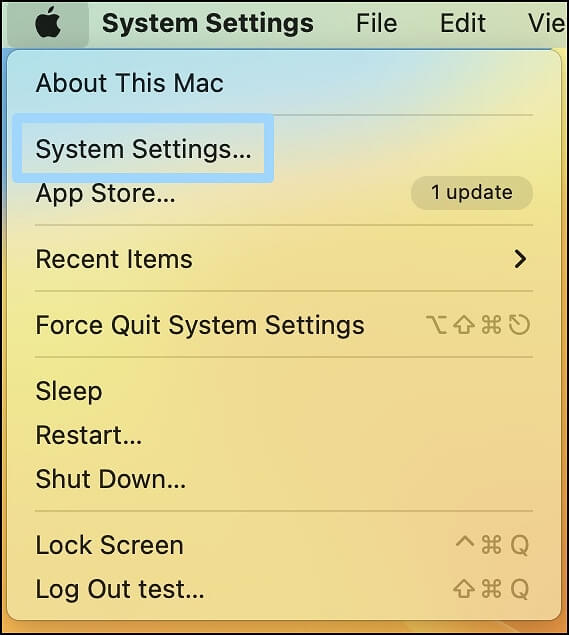
Step 2. Click the "General" button.
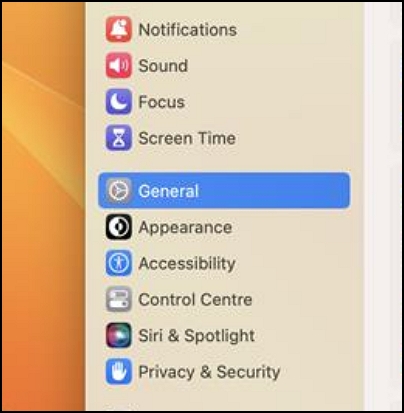
Step 3. Choose "Transfer or Reset", and you will see Erase Assistant.
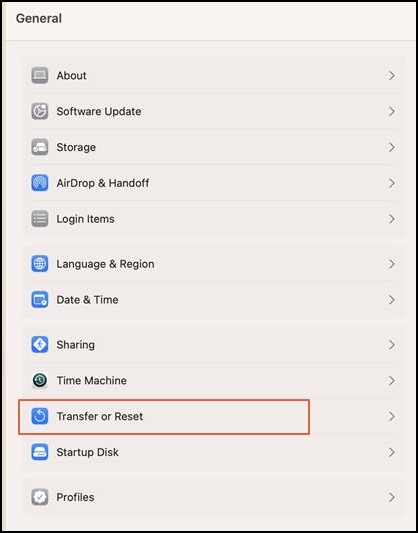
Step 4. Click the "Erase All Content and Settings" option.
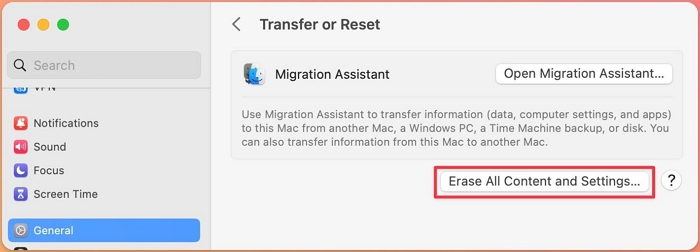
For macOS Monterey:
Step 1. Click the Apple icon and choose "System Preferences".
Step 2. Now you can see the "Erase All Content and Settings" option.
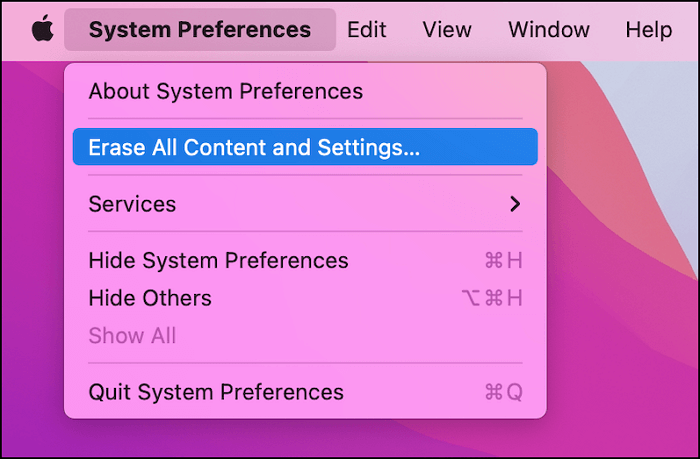
Then we can use Erse Assistant to erase your Mac.
Step 1. After clicking the "Erase All Content and Settings" option, you may need to enter the admin password to confirm erasing.
Step 2. The Erase Assistant will ask you to back up with Time Machine.
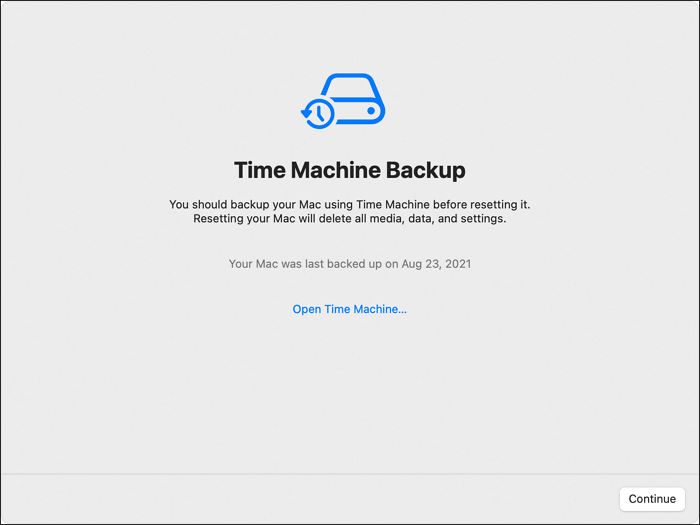
Step 3. The following information will be erased. Click "Continue" to confirm.
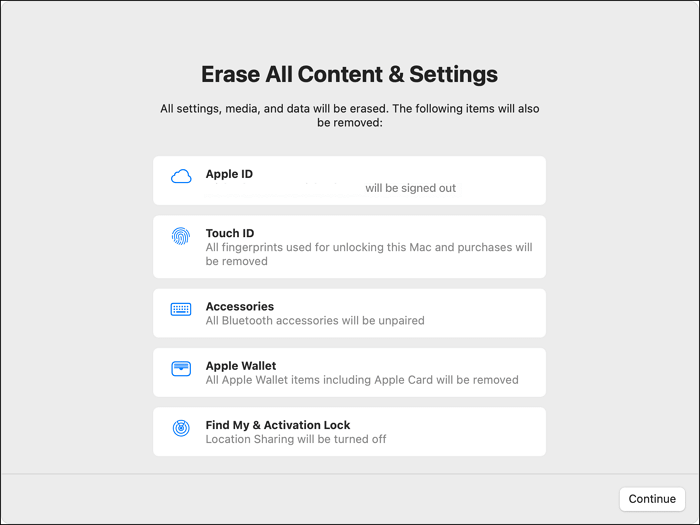
Step 4. Click "Erase All Content & Settings", and your Mac will start erasing.
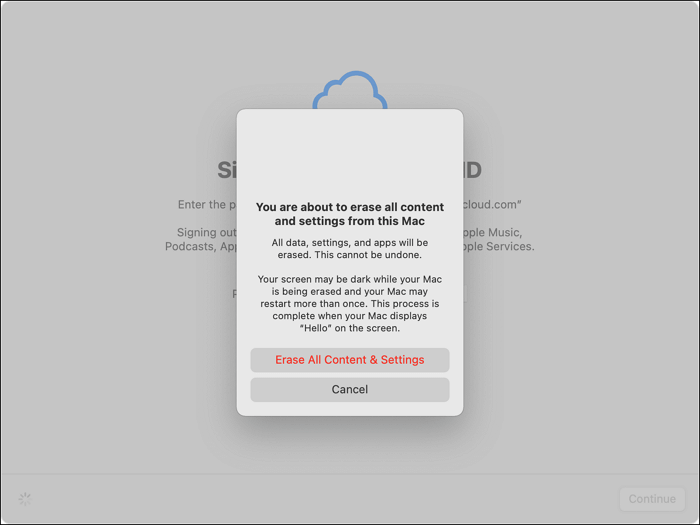
Step 5. Wait and restart your Mac to finish the erasing.
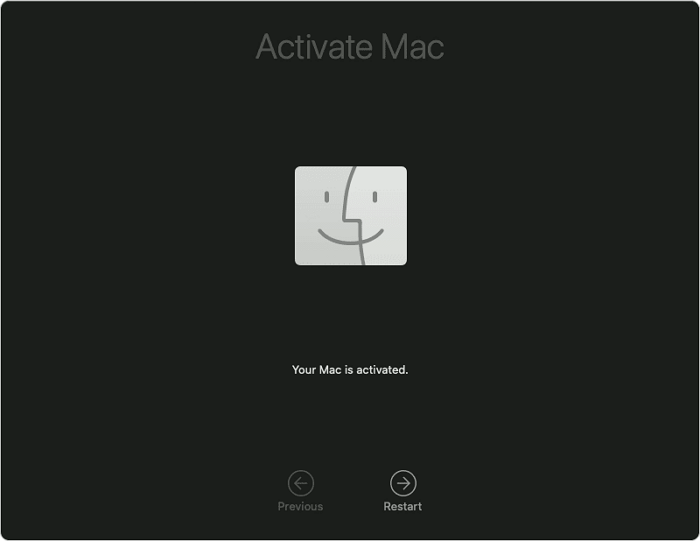
Method 2. How to Erase Mac with Recovery Mode
Suppose you forget your Mac's entering password. In that case, you can factory reset Mac without password by entering the Recovery Mode and using Disk Utility to erase your Mac and then reinstall macOS.
Step 1. Shut down your Mac.
Step 2. Turn on the Mac and hold the Command + R keys or the power button to enter the Recovery Mode. (Click the link to fix Mac Recovery Mode not working.)
Step 3. When you see the Recovery Mode menu, click "Disk Utility".
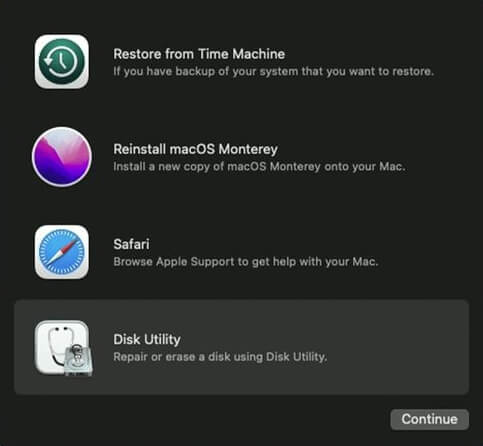
Step 4. Choose the startup disk - Macintosh HD, and erase the disk.
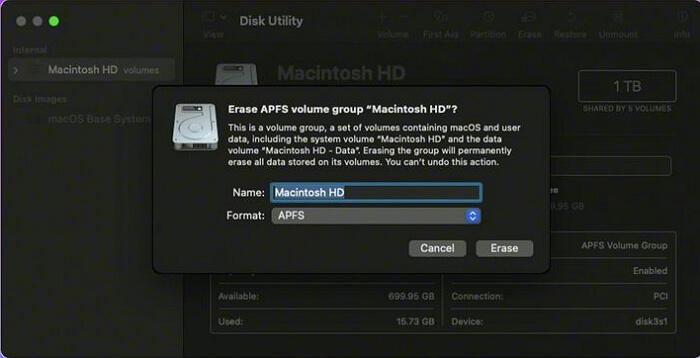
Step 5. After erasing, you can quit Disk Utility and choose "Reinstall macOS".
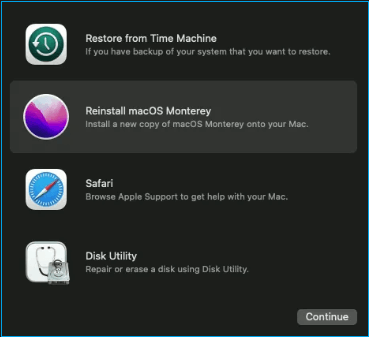
Step 6. Follow the prompts and reinstall macOS.
How to Recover Lost Files with Software After Erasing Mac
After erasing your Mac, you may want to recover some lost files, and sometimes you may encounter data loss issues before you erase your Mac. How to recover lost files from an erased Mac? You can retrieve lost data with Deep Data Recovery for Mac.
What can Deep Data Recovery for Mac do for your Mac?
- Recover lost data because of formatting, deleting, system crashes, operation errors, hard drive damage, and other reasons.
- Recover deleted files Mac from camcorders, cameras, SD cards, memory cards, external hard drives, USB flash drives, and other devices.
- Get back data from Mac OS X, macOS Catalina, macOS Big Sur, macOS Monterey, and macOS Ventura.
From the tutorial below, you will find that Deep Data Recovery for Mac is a handy tool:
Step 1. Select file types
Launch Deep Data Recovery software. Select file types and click "Next" to start
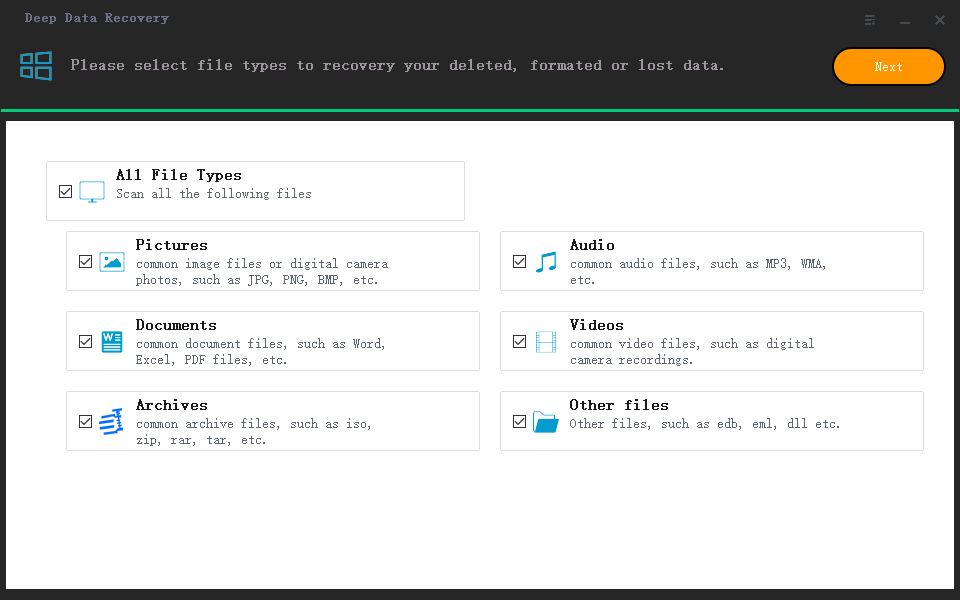
Step 2. Select the location to scan
Choose the hard drive, SSD, SD card, USB flash drive, or TF card where you lost data. Click "Scan" to start scanning.
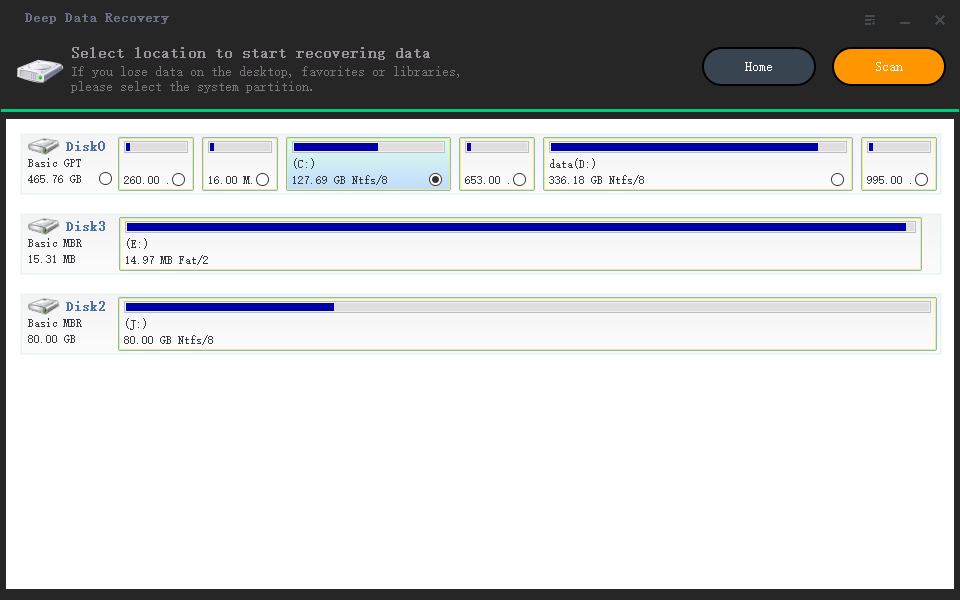
Step 3. Filter lost Mac data
The software will automatically scan for lost data on MacBook/iMac. When the scan completes, filter wanted data through the "Type" and "Path" buttons.
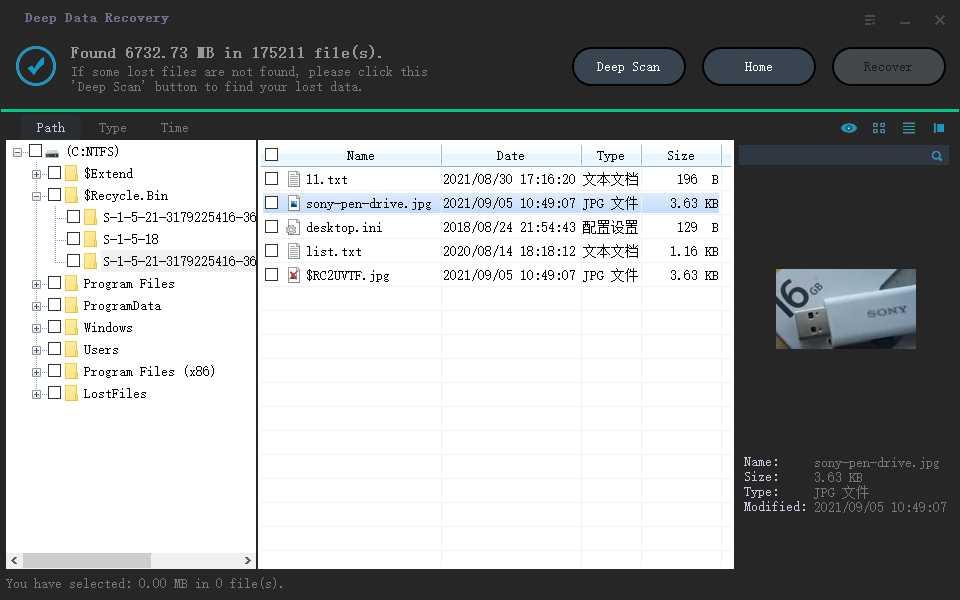
Step 4. Recover lost data or files
Double-click a file to preview it. Then, click the "Recover" button to restore the lost data to another place.
Erase Mac FAQs
We prepared four questions and answers about erasing Macs you may be interested in below.
Does erase Mac and factory reset it delete everything?
Does a factory reset delete everything? Erasing Mac and factory resetting Mac will allow you to choose whether to keep the data. If you want to recover some deleted files, you can download and install Deep Data Recovery for Mac.
- 1. Scan for the deleted files on Mac.
- 2. Preview the lost files.
- 3. Retrieve the files on Mac.
How do I securely wipe my Mac before selling it?
You should log out of all the linked accounts on Mac, sign out of the iCloud, and unpair Bluetooth devices to ensure your personal information is safe after your sale. Then you can boot into Recovery Mode and use Disk Utility to erase the disk, and you can quit Disk Utility and reinstall macOS.
How to use Erase Assistant on Mac?
This option is in different places on macOS Ventura and Monterey. After finding the Erase Assistant, you need to follow the prompts and erase your Mac.
For macOS Ventura:
- 1. Click the Apple icon and choose "System Settings".
- 2. Click the "General" button.
- 3. Choose "Transfer or Reset", and you will see Erase Assistant.
- 4. Click the Erase All Content and Settings option.
For macOS Monterey:
- 1. Click the Apple icon and choose "System Preferences".
- 2. Now, you can find the Erase All Content and Settings feature.
How to Boot into Disk Utility to erase Mac?
It is simple to boot Mac into Disk Utility or Recovery Mode. You should shut down your Mac and hold the power button. (You should press the Command and R keys using an Intel-based Mac.) Then you will see the Recovery Mode menu, and you can click "Disk Utility" and erase the startup disk.
Related Articles
- Will System Recovery Delete My Files? Answered Here!
- Why Can't I Format My External Hard Drive on PS4? [Ultimate Answer and Tutorial]
- Fixes for Bad System Config Info Error in Windows 10/8/7
- Real Fixes: This app can't run on your PC in Windows 10